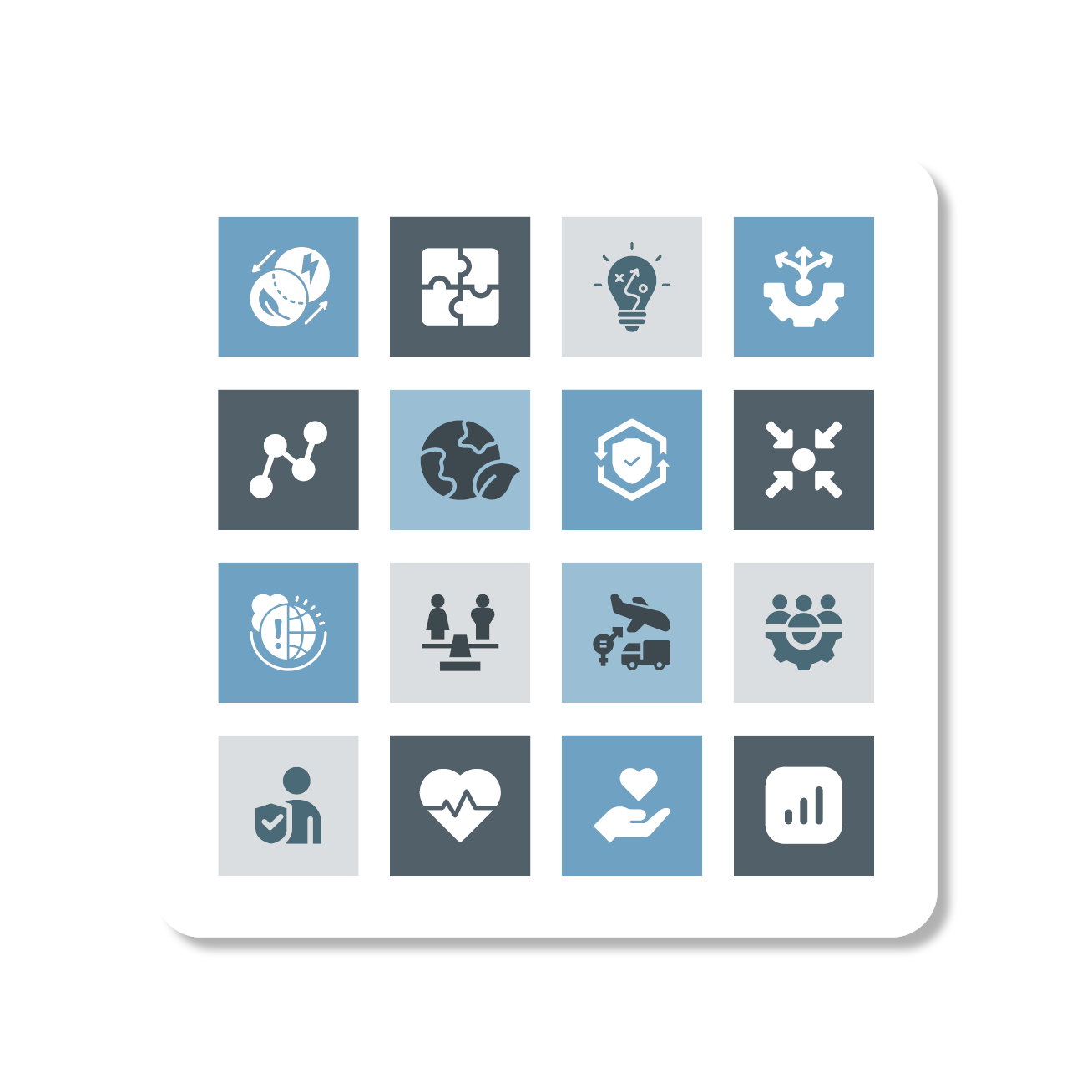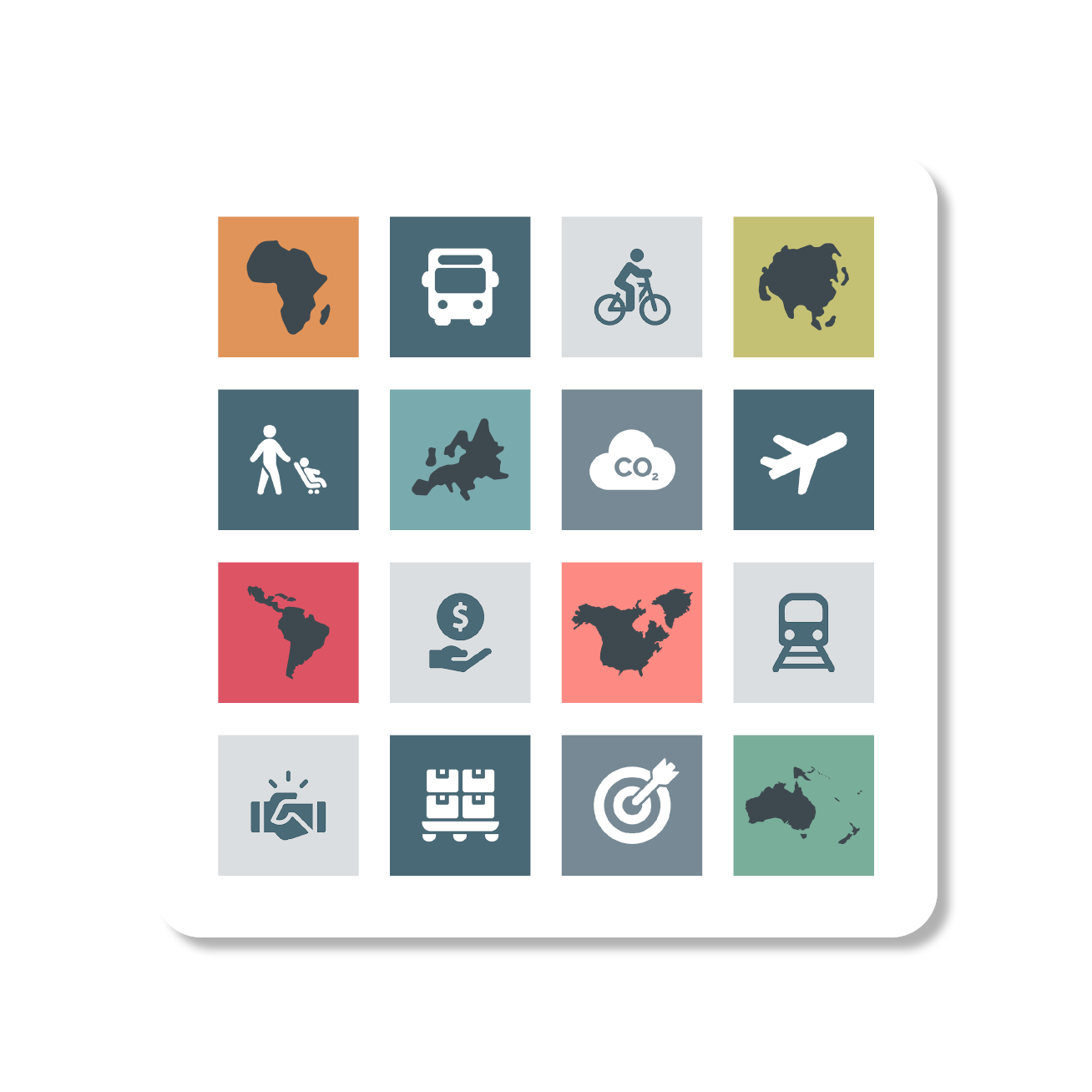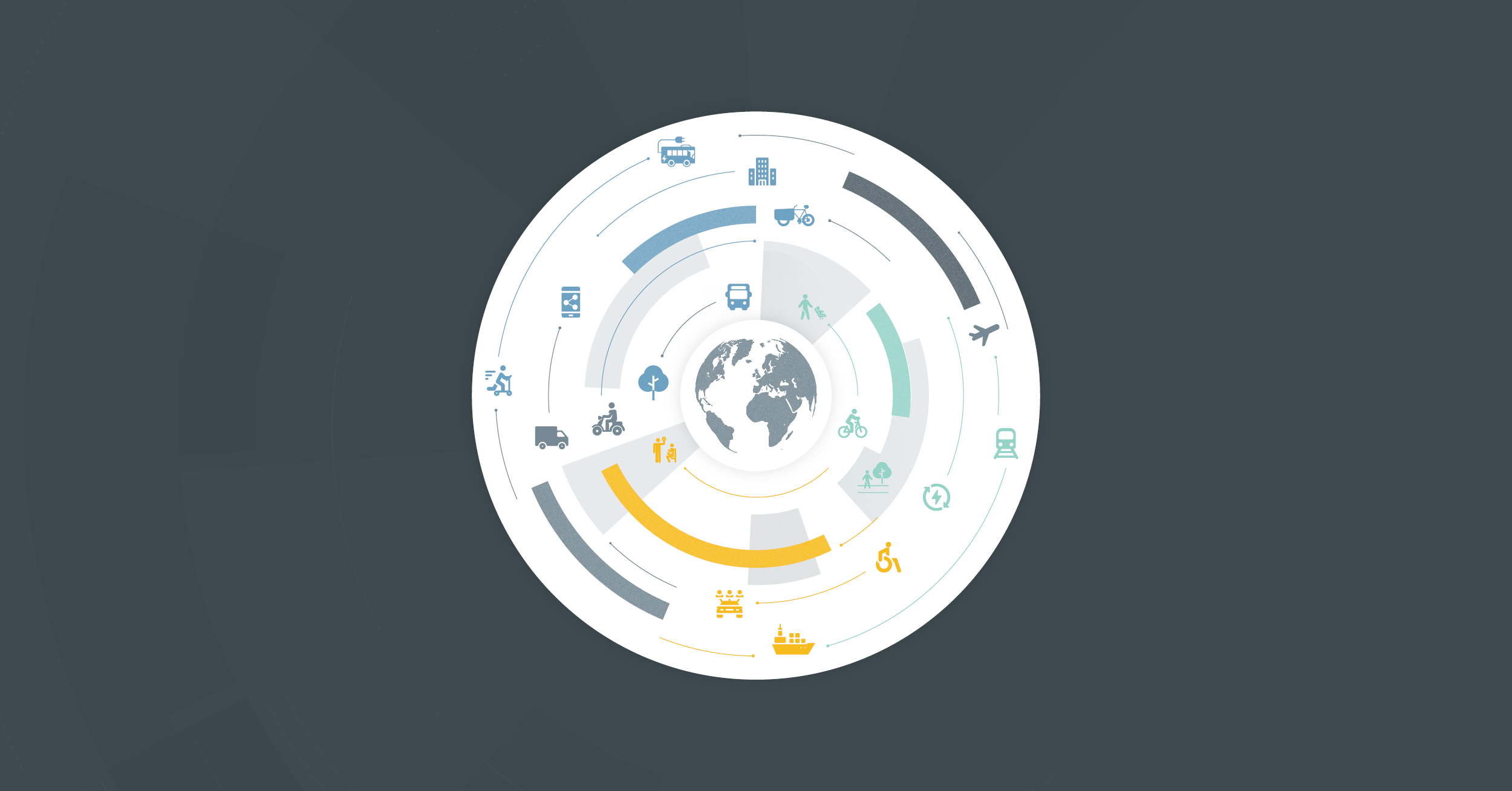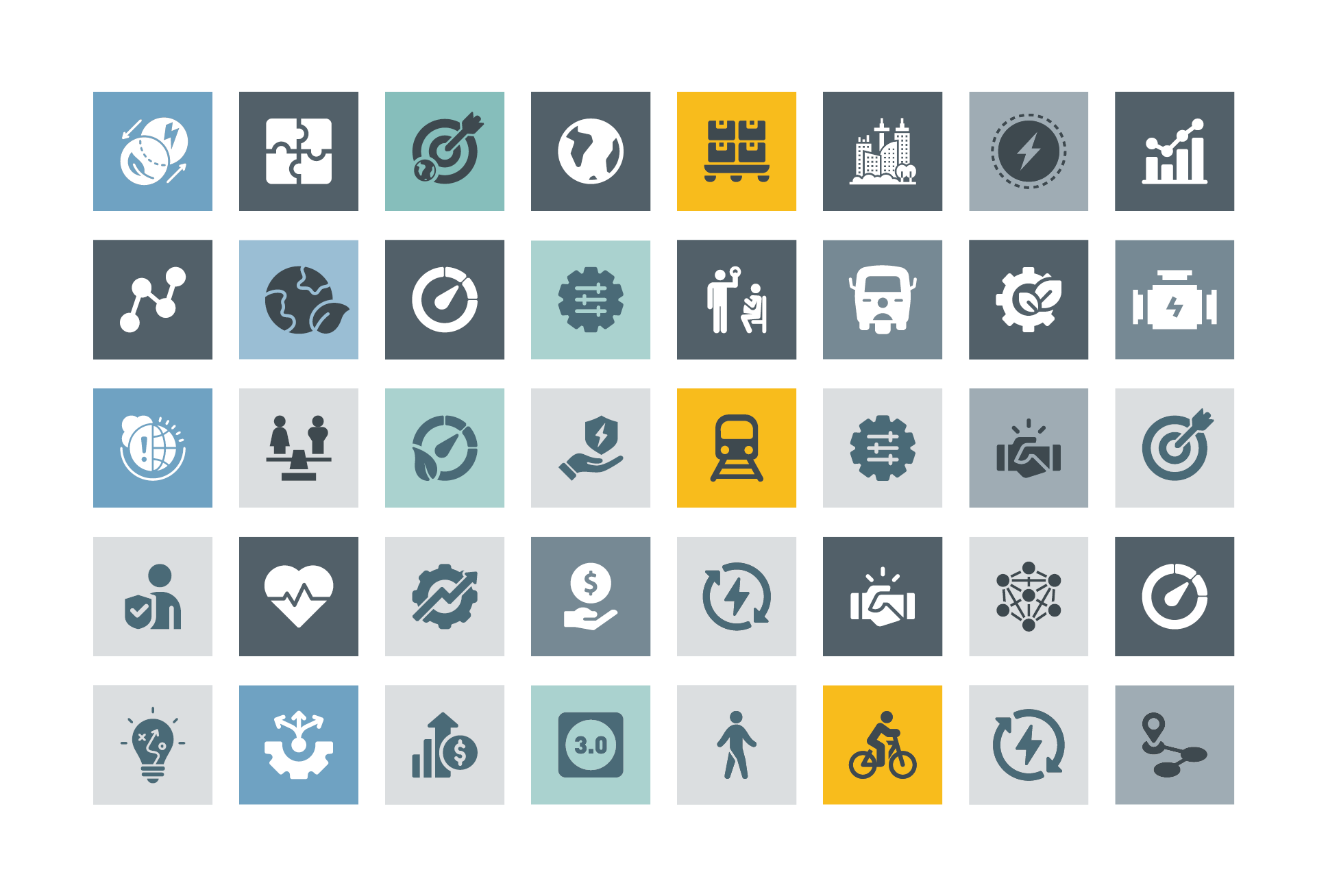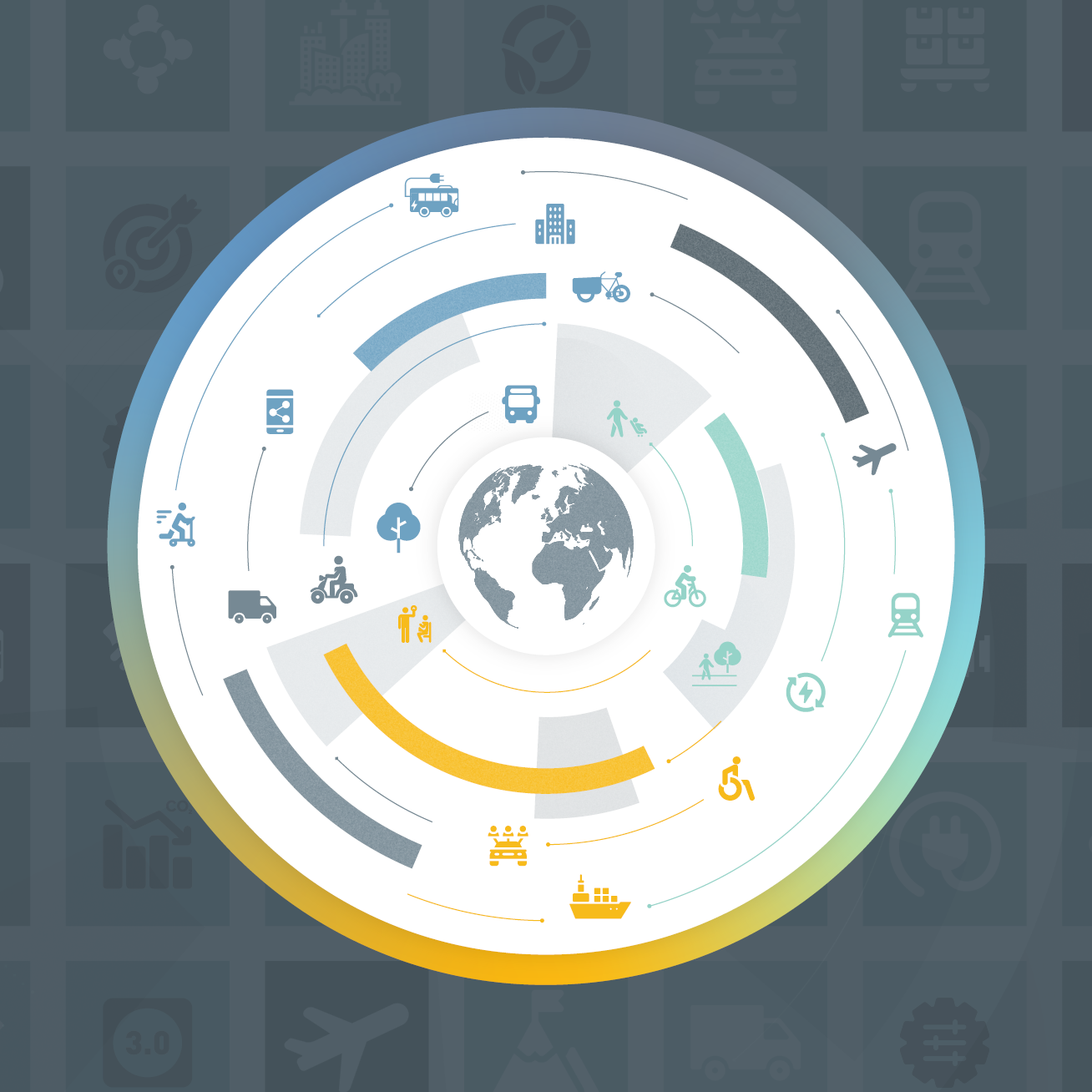GSR4 – Press Kit
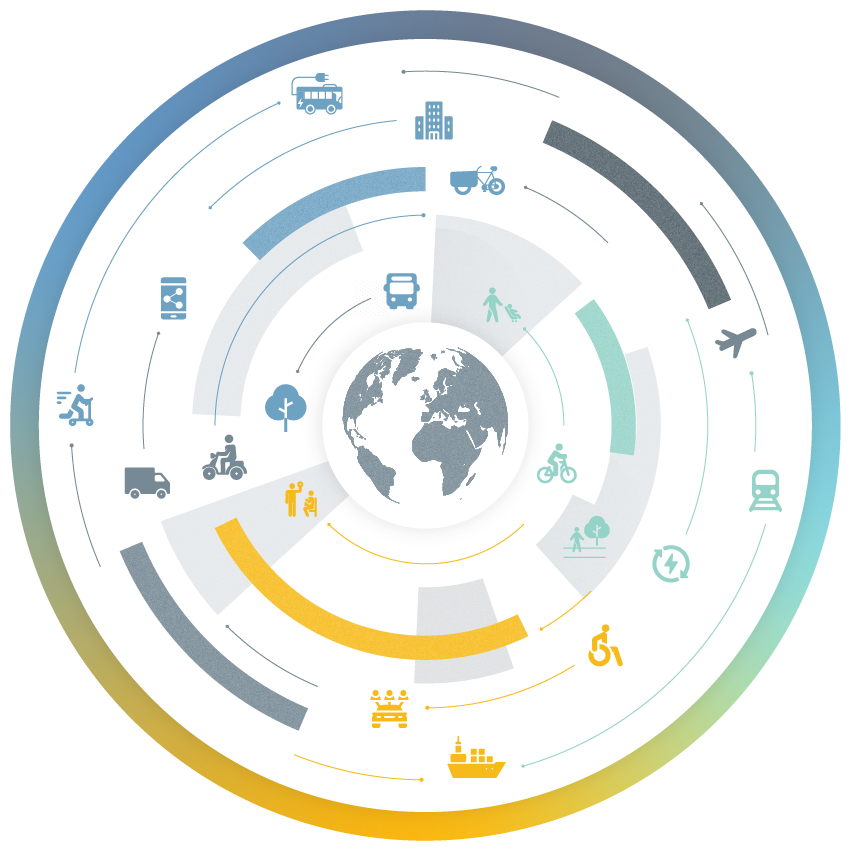
Transport in a Crisis Era: New Report Calls for Bold, Just, and Sustainable Transformation of Transport Systems for People and the Planet
Brussels, 29 October 2025 – A new publication, “Transport in a Crisis Era: Seizing Opportunities for a Just, Sustainable Transformation”, urges governments and decision makers to act decisively to align transport systems with climate, social inclusion, and sustainability goals
According to IPCC transport emissions need to drop at least by 59% by 2050 compared to 2020 levels to stay within 1.5°C warming. Transport is the lifeline of our societies and economies connecting people and the economies, yet the sector is a leading contributor to emissions. In 2023, it remained the second largest and fastest growing emitting sector – responsible for 15.9% of global greenhouse gas emissions and 21.9% of global CO₂ emissions – and consumed 27% of global energy for end-uses, with fossil fuels accounting for 95.4% of energy used in transport. Moreover, the transport sector is among the most exposed to climate risk. Climate-related disasters cost USD 15 – 22 billion in damage to transport infrastructure every year, hitting low- and middle-income countries (LMICs) hardest. Meanwhile, billions of people still lack access to safe and reliable transport, limiting social inclusion and economic development. The urgency to act has never been greater.
Produced by SLOCAT, these Takeaways for Decision Makers distil key findings from the SLOCAT Transport, Climate and Sustainability Global Status Report – 4th edition (GSR4) provide actionable insights at the crossroads of transport, climate, sustainability and social justice – supporting decision makers in accelerating a just transition towards sustainable, low-carbon transport systems.
The report highlights both progress and persistent challenges. Over the past two years, some progress has been achieved towards sustainable transport across all modes and levels of governance, providing a foundation to build upon. However, the overall trajectory of transport transformations remains off track for achieving a truly sustainable future.
While there have been encouraging developments, key transport sectors are not transforming fast enough, and clear headwinds are emerging. With transport systems in many LMICs still taking shape, the next decade is a decisive window to avoid inefficient investments and costly lock-in,” said Maruxa Cardama, Secretary General of SLOCAT. “It’s time to set a quantified global goal for inclusive, low-carbon, resilient transport – expanding access through electrified rail, mass transit, walking, and cycling, while phasing out fossil fuels and cutting energy use.
The report reflects momentum in global frameworks, including the UN Decade of Sustainable Transport (2026-2035) and the first Global Stocktake of the Paris Agreement, which called for reducing road transport emissions and transitioning away from fossil fuels. The International Maritime Organization’s 2023 GHG Strategy set targets to cut international shipping emissions 20-30% by 2030 and 70-80 % by 2040, while the International Civil Aviation Organization adopted a Long-Term Aspirational Goal to achieve net-zero carbon emissions from international aviation by 2050.
National and subnational governments are acting too – strengthening urban-rural connectivity, tightening vehicle emission standards and maritime emissions, investing in rail, road transport electrification and sustainable aviation fuels, and advancing cleaner urban mobility through expanded emission zones, congestion pricing, transit-oriented development, and parking reforms.
Among the report’s key messages:
- Transport’s Critical Role and Scale of Impact: In 2023, transport remained the second largest and fastest growing emission sector. According to the IPCC, transport emissions must drop at least by 59% by 2050 compared to 2020 levels to stay within 1.5°C warming. With current policies, transport emissions are projected to rise – underscoring the need for urgent action.
- Inequalities and Access Gaps: Billions of people remain excluded from affordable, safe, and sustainable mobility. In many low- and middle-income countries (LMICs) and rural areas, high costs of moving goods hinder trade volumes, limit the availability of goods, and increase their final price.
- Decarbonisation Progress is Incremental but Uneven: Despite momentum, land transport electrification alone cannot deliver a sustainable transport transition. Broader systemic shifts in behaviour, investment and policy — expanding mass and active transport, and rail freight – are urgently needed to align transport with climate and inclusion goals. Despite technological advances, aviation and shipping remain major and fast-growing emitters; scaling clean fuel production and closing cost gaps are critical. Rail continues to offer a compelling transport decarbonisation solution.
- Car-centric Systems Impose High Costs for People and the Planet: Private car dependency continues to drive inequality, emissions, pollution and road danger — locking societies into unsustainable mobility models that exclude billions. Shifting toward safe, shared and active mobility is essential for healthier, more inclusive, and climate-compatible communities.
- Climate Impacts are Rising Costs and Risks for Transport Systems: Climate change is already disrupting transport networks and livelihoods, threatening connectivity, economic growth and development worldwide. Building resilience into transport is no longer optional — it is essential to protect people, livelihoods and sustainable development.
- Investment Gaps Hamper a Just Transition: Building resilient and inclusive transport systems is critical to achieving climate goals while safeguarding communities and economies.
— Read key transport facts and data below (Transport by the Numbers)
A Systemic Approach: The Avoid–Shift–Improve Framework for Sustainable Transport
Authors call for a systemic approach to deliver bold action through the
Avoid–Shift–Improve (ASI) framework for sustainable transport. ASI enables the expansion of access to sustainable transport through:
- Avoiding unnecessary motorised trips with better transport and land-use planning;
- Shifting travel to more sustainable and shared modes such as rail, mass public transport, cycling, and walking, and
- Improving vehicles and fuels to make them cleaner and more efficient.
Policymakers applying this framework can reduce transport emissions aligned with net zero pathways by 2050, accelerate the transformations towards energy-efficient and fossil-free transport transitions, and strengthen resilience – while catalysing finance and investment in clean, inclusive solutions for passenger and freight transport.
— Read about the Avoid-Shift-Improve Framework for Sustainable Transport
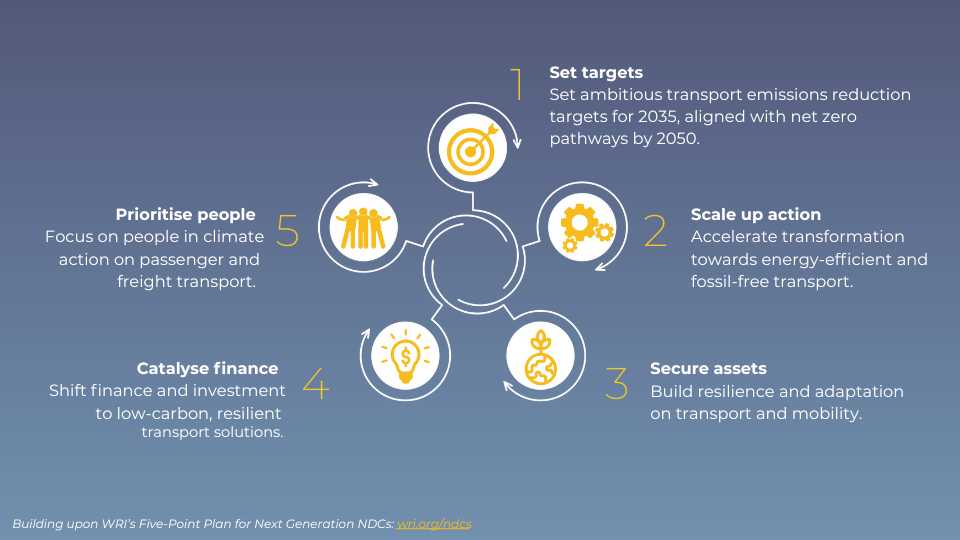
A Five-Point Plan for Transport in NDCs
The report stresses that 2025 Nationally Determined Contributions are a major opportunity for countries to implement robust transport targets aligned with the outcomes of the first Global Stocktake of the Paris Agreement. Strong transport commitments can boost prosperity, attract investment, and create jobs. Cities can become cleaner, through reduced emissions and improved air quality, and more inclusive, with diversified transport infrastructure and better access to essential services for all. Greater efficiency in transport systems saves energy, land and public funds. Shifting from fossil fuels enhances energy security and resilience to global shocks and lowers costs from fuel imports.
A Moment of Urgency — and Opportunity
Despite economic and political headwinds, this is a moment of opportunity. Aligning transport transformations with social inclusion, decarbonisation, energy transition and resilience goals will unlock new investment, innovation, and shared prosperity worldwide.
“With transport systems in many LMICs still taking shape, the next decade is a decisive window to avoid inefficient investments and costly lock-in,” Cardama said. “It’s time to set a quantified global goal for inclusive, low-carbon, resilient transport – expanding access through electrified rail, mass transit, walking, and cycling, while phasing out fossil fuels and cutting energy use”
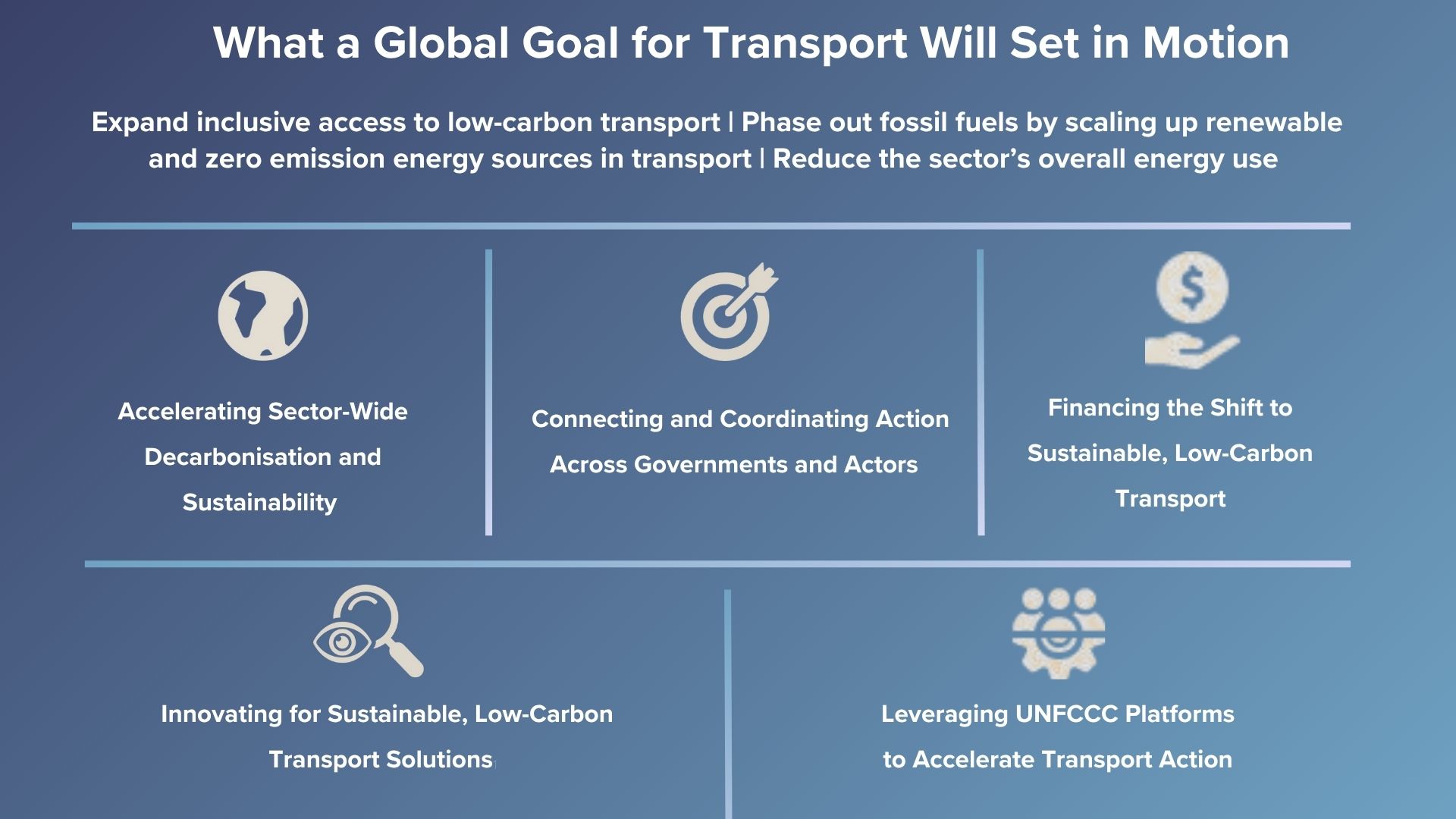
Who is SLOCAT: SLOCAT, the Sustainable, Low Carbon Transport Partnership, accelerates the transformation of transport systems and services towards inclusive, healthy, green and resilient solutions for people and the planet. SLOCAT provides collaborative data and evidence-based knowledge, action initiatives, political strategies, dialogue, and strategic communications. This helps build collective thought leadership and advocacy at the crossroads of transport, sustainability, climate and social justice issues. SLOCAT emphasises all land transport modes with universal analyses and actions, especially for low- and middle-income countries.
What is the GSR: The Global Status Report is your one stop-hub for the latest data, trends, and policies shaping sustainable transport worldwide. It brings together up-to-date insights on the key challenges and opportunities—covering demand, use and access to transport, climate and sustainability trends, as well as policy and investment developments. The goal? Equip decision-makers within and beyond transport with knowledge for faster, bolder action.
Read the GSR4: SLOCAT (2025), Transport, Climate and Sustainability Global Status Report – 4th edition, https://gsr4.slocat.net
Get to know the authors, contributors and peer reviewers: https://gsr4.slocat.net/acknowledgements/
Read the Takeaways for Decision Makers: SLOCAT (2025), Transport in a Crisis Era: Seizing Opportunities for a Just, Sustainable Transformation: https://gsr4.slocat.net/wp-content/uploads/sites/2/2025/10/Transport-in-a-Crisis-Era.pdf
Authors: Hannah E. Murdock (Imperial College London), Maruxa Cardama (SLOCAT), with contributions from Holger Dalkmann (Sustain 2030) and Nikola Medimorec (SLOCAT).
Media Contact: Jules Vincent – Communication Specialist: jules.vincent[at]slocatpartnership.org
Transport by the Numbers
Among GSR4’s key messages, the report reveals the stark realities — and urgent opportunities — that currently shape global transport systems.
Transport’s Critical Role and Scale of Impact
- The transport sector produced 7% of the global GDP and employed 193 million people worldwide in 2021.
- 15.9% of global GHG and 21.9% of global CO₂ emissions come from transport in 2023.
- The transport sector consumed a third (27%) of the global energy for end-uses in 2023 – the fastest growing energy-consuming sector.
- 95.4% of energy used in transport still comes from fossil fuels — this has barely changed in 50 years and is directly linked to the high emissions and air pollution from transport.
- Fossil fuels subsidies (implicit and explicit) totalled around USD 7 trillion or 7.2% of global GDP in 2023.
- A handful of mostly high-income countries continue to contribute the highest absolute and per capita emissions, while LMICs bear the impacts and have not received sufficient financing for a just transition in transport.
- Europe, North America and Oceania continued to contribute the highest per capita transport GHG emissions in 2023. The US remained the highest transport emitter globally in absolute emissions and the fifth highest in per capita emissions.
- Freight transport and logistics was responsible for around 12% of energy-related global CO₂ emissions and accounted for 43% of global CO₂ emissions from the transport sector (including international aviation and shipping) in 2023, with this share expected to reach 57% by 2050.
⚖️ Inequalities and Access Gaps
- Only 38% of the global rural population has access to all-weather roads as of 2020— and just 31% in Africa, 35% in Latin America and the Caribbean, nearly 41% in Asia, and 42% in small island developing states (SIDS).
- LMICs had 60% of the world’s vehicle fleet yet suffered 90% of the road fatalities in 2021.
- In Africa, trade costs are five times the global average; a 10% drop in transport costs could increase the region’s trade volumes by 20%.
- Below 40% of urban residents had convenient access to public transport in much of Africa, South Asia, and Central America in 2022, versus 80–100% in many places in Europe, Australia and New Zealand.
- The under-representation of women in transport leadership roles and the sector in general perpetuates policies and systems that fail to serve half the population – Globally, women held just 15.6% of transport jobs in 2023, with only 6.5% in Africa, 13.3% in Asia, 14.2% in Latin America and the Caribbean, and over 24% in Oceania, Europe and North America.
🌍 Climate Impacts are Rising Costs and Risks for Transport Systems
- Climate-related disasters cost USD 15 – 22 billion in damage to transport infrastructure every year, hitting LMICs hardest. SIDS face annual damage costs between 1% and 8% of their GDP due to natural disasters.
- ~ 27% of global road and rail infrastructure is exposed to such hazards, with flooding alone responsible for 73% of all damages.
- Asia alone bears 60% of the global transport infrastructure damage costs.
- Extreme heat caused 23 million occupational injuries and 19,000 deaths in 2022, with transport and tourism workers among the most affected.
- Informal transport workers, already vulnerable to economic shocks, face severe risks and income losses when climate disasters strike.
⚡🚆✈️🚢 Decarbonisation Progress is Incremental but Uneven
- Road transport electrification continued its surge; electric car sales rose 25% in 2024, yet EVs still make up under 5% of cars worldwide.
- 68 countries and 26 states/provinces now have EV targets; 49 countries aim for 100% EV sales or bans on internal combustion engines but most are off track to meet them.
- 40 countries have committed to achieve 100% new electric truck and bus sales by 2040, with an interim 2030 target of 30%.
- Electric two- and three-wheelers lead electrification – nearly 400 million units globally in 2024, rapidly electrifying modes of informal transport, mostly in Asia.
- Electric buses sales grew 30% in 2024 yet they still represent only ~ 3% of global bus sales.
- Electric light-commercial vehicles (vans) more than doubled in 2022-2024, reaching a 1.3% global share.
- Charging infrastructure expanded rapidly – public charging points grew 40% in 2023, with fast charger installations outpacing slow installations.
- Rail is the most electrified motorised transport mode, with over 15% of its energy from renewables as of 2022, the highest share among transport modes. Indian Railways reached 98% electrification in 2025. Yet, rail still accounted for only ~ 12% of global passenger transport in 2022, and its share of global freight has dropped sharply over the years.
- Shipping emissions would rank as the ninth-largest GHG emitter in 2023, if counted as a country – nearly equal to all transport emissions from all countries in Africa and Latin America and the Caribbean combined.
- Half of new ship tonnage ordered in 2024 can operate on alternative fuels such as ammonia, methanol or hydrogen, and 37% of the vessel tonnage already incorporates energy-saving technologies.
- 62 green shipping corridor initiatives were announced by late 2024 – a 40% increase over 2023.
- Aviation CO₂ emissions are set to surpass their 2019 level in 2025, remaining the fastest growing source of emissions in some regions.
- Sustainable aviation fuels (SAF) production more than doubled in 2024 but still covered only 0.3% of total aviation fuel use, projected to rise to 0.7% in 2025.
- USD 1.5 trillion over 30 years will be required to meet 2050 SAF production targets.
🚗 Car-centric Systems Impose High Costs for People and the Planet
- The world’s 8 billion people rely on transport to reach jobs, education or health services. There are only 1.6 billion light-duty vehicles (cars, trucks and vans). Expanding private car use for all is physically and environmentally impossible due to resource, space and climate limits.
- Public transport ridership has yet to recover from the pandemic: over half of operators reported 2024 passenger levels still below 2019, while informal transport providers remain under-recognised and under-supported.
- SUVs made up nearly half of all car sales in 2023, consuming more energy, worsening emissions, reducing safe public space for walking and cycling, and increasing the risk of death and injury in road incidents, compared to smaller size cars.
- Traffic congestion has not only returned but worsened since 2022, fuelling air and noise pollution, community isolation and sedentary lifestyles.
- Road traffic injuries are the leading cause of death for people aged 5–29, with 1.19 million fatalities and over 50 million injuries annually — costing the global economy USD 3.6 trillion, or 3.7% of global GDP (2021).
💰 Investment Gaps Hamper a Just Transition
- Meeting climate targets in transport will cost an estimated USD 2.7 trillion annually until 2050 – seven times the investment levels in transport in 2023.
- LMICs in Africa and Asia face the largest investment gaps.
- In 2023, only 3.4% of the USD 1.9 trillion in climate finance was directed towards adaptation (USD 65 billion), and of this, just 2.7% (USD 1.8 billion) went to transport adaptation and resilience despite the growing risks.
- A just transition must protect the rights and livelihoods of transport workers, who are essential to maintaining economic development and mobility access worldwide.
